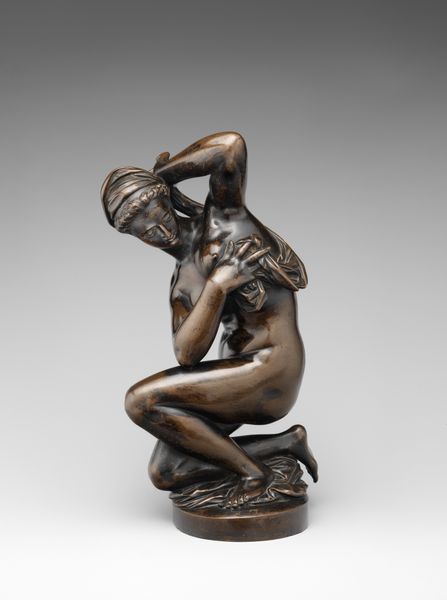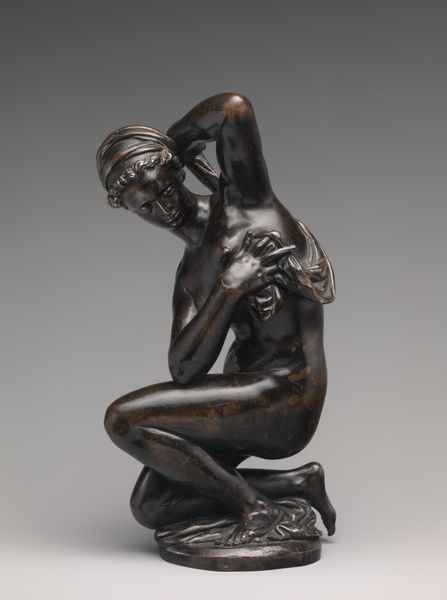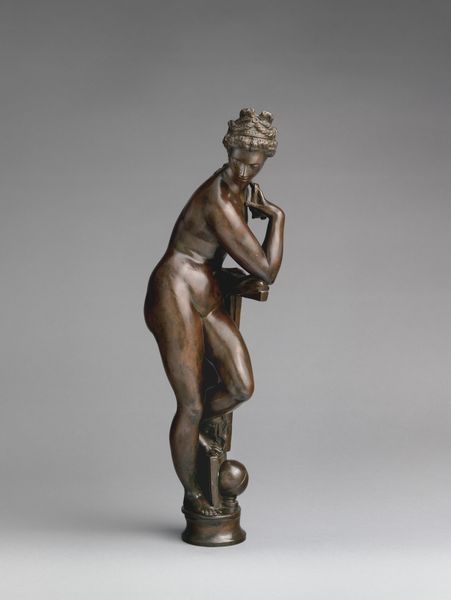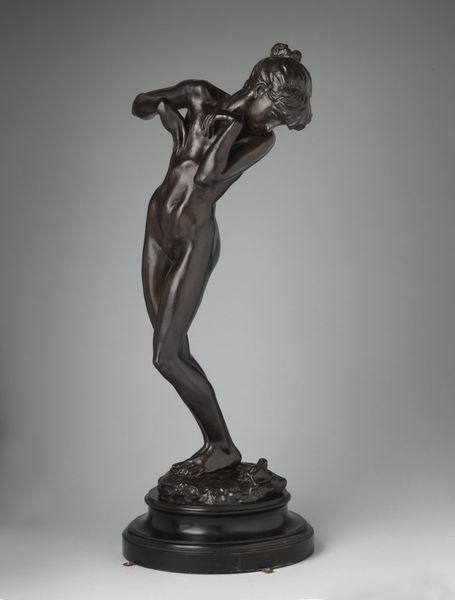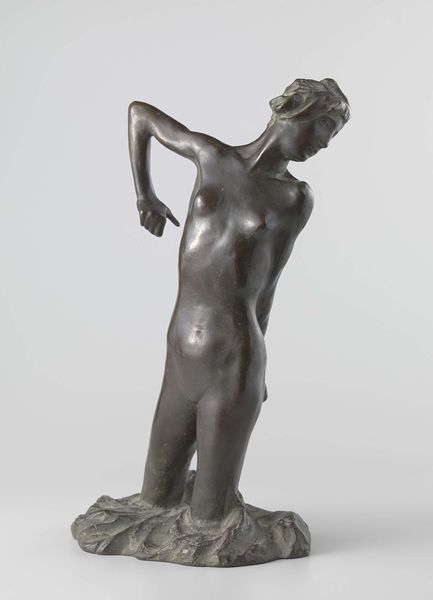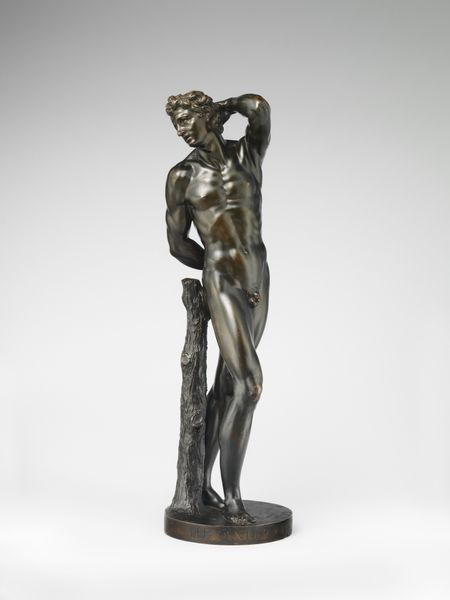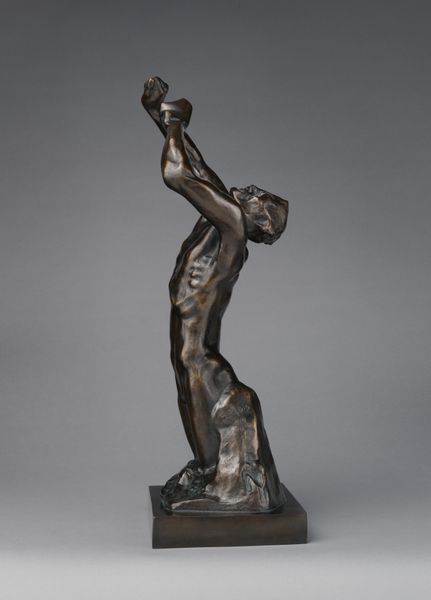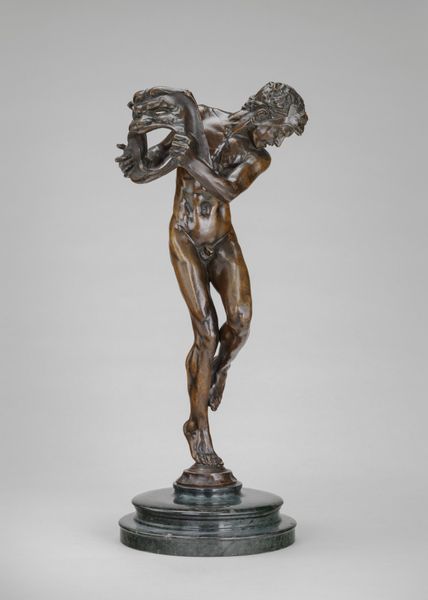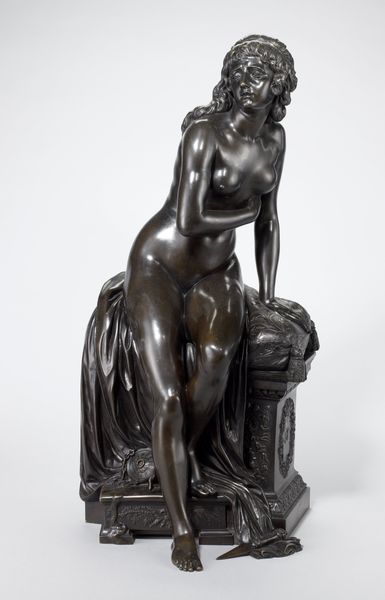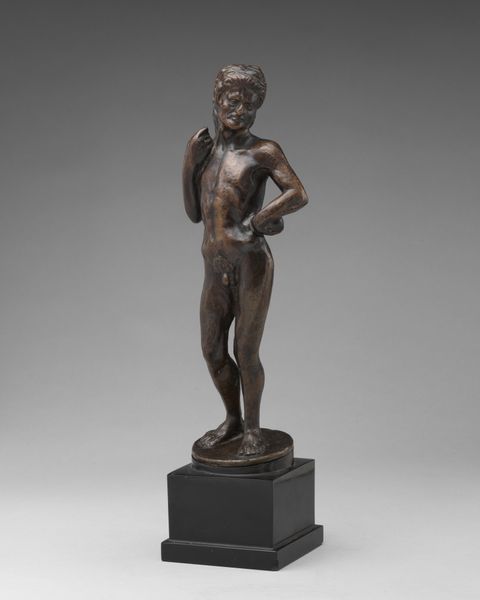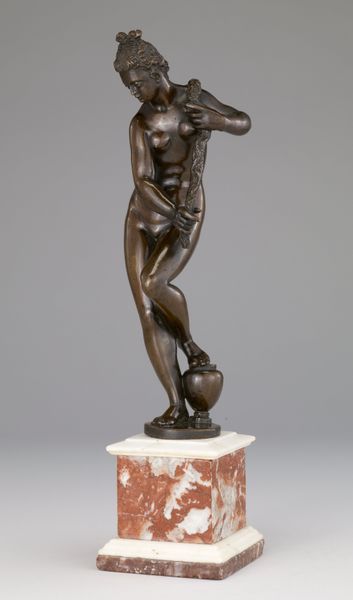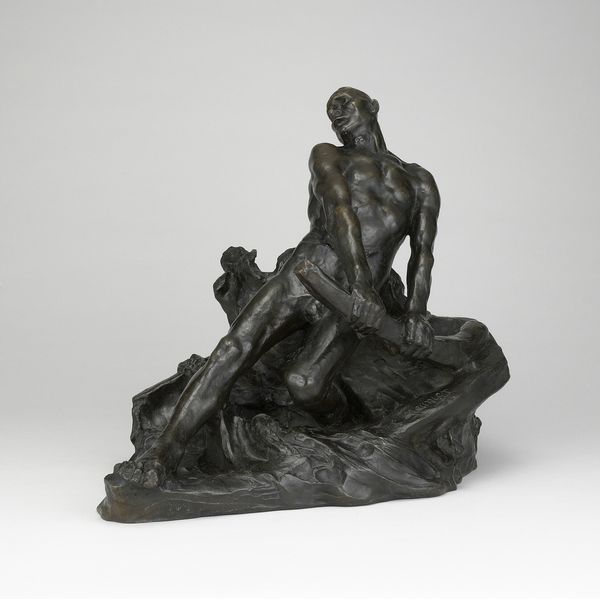
bronze, sculpture
#
sculpture
#
bronze
#
mannerism
#
figuration
#
sculpture
#
nude
Copyright: Public domain
Curator: Standing before us is Giambologna's "Bathing Venus", a bronze sculpture currently residing at the Metropolitan Museum of Art. It seems like her gesture wants to preserve a last fragment of privacy, covering herself, maybe from us, as she is trying to hide in the shadows of an untold past, which gives a dramatic narrative mood to the whole piece. Editor: Dramatic indeed, in both pose and medium. Look at the deep, almost chocolatey color of the bronze. You know, bronze casting involved intensive labor—digging, smelting, pouring—reflecting both skill and societal investment. Each bronze has the echoes of every pair of hands who touched it during its long process of making. Curator: Yes, those hands shaped the figure so that she's both modest and undeniably sensual, don’t you think? There's a sort of delightful tension, isn’t it? A study in opposites, and the material really amplifies that quality. And the surface treatment -it begs to be touched. Editor: Begging, precisely! That's part of its market appeal, as part of the consumption of such highly prized material, made specifically to convey power. A tactile experience linked to ownership, access. What resources—material and human—were commanded for this Venus to emerge? Curator: And thinking of the historical consumption aspect… Who *was* looking at her, initially? The elite, of course. But art always holds a mirror up to society and the people who consume the world around it. So this piece makes me wonder, What are we reflecting here now? What do we value? Editor: Indeed! "Bathing Venus" allows us to see in three dimensions how even the artistic subject comes back to materiality as the source for both understanding it, and reflecting the human hand that forged it to create its unique message. It also reveals an aesthetic that is also bound to economic issues from back then! Curator: Ultimately, isn't that what draws us to art? Not just the surface allure, but the history etched in every mark, and how its own origins make up a dialogue that speaks across the ages. It all just becomes part of the magic of history, I think, where human creation becomes the magic material. Editor: True. In this case it's a material so steeped in labour, resource extraction and trade, its cultural and monetary values, not to mention human aesthetics values makes us keep reconsidering how artistic narratives and history become permanently joined by these physical origins.
Comments
No comments
Be the first to comment and join the conversation on the ultimate creative platform.
